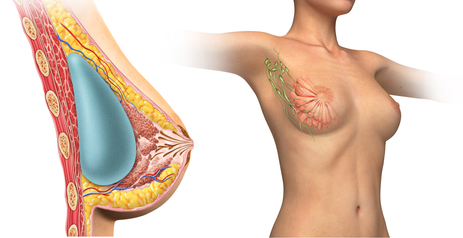Breast augmentation may have significant effects on the nipple and the areola, the colored zone that surrounds the nipple, so it is important that you discuss these issues with your surgeon in order to avoid unintended consequences. This is particularly true in three groups of patients: women who have been pregnant, women who have experienced significant weight gain and weight loss, and women whose breasts developed with a settled shape.
In general with these patients, the placement of a breast implant may lead to a stretching out of the areola, so that it dominates the appearance of the breast in an undesirable way. This is particularly true when a breast implant is placed in the subglandular plane immediately beneath the breast tissue, but it is also often the case with submuscular implants, which are placed beneath the pectoral muscles.
There are two things to look for when you examine your breasts to see if you may be predisposed to a stretching out of the areola with breast enhancement surgery. First stand in front of a mirror and place your hands so that they form a circle around the areola; put tension on the breast with your hands, so that it is stretched outward away from the areola. If you think the areola looks too large, you need to discuss this with your surgeon so that you can come up with a treatment plan. The second thing to look for is the degree of settling of the breast. If the breast overhangs its natural fold to a significant degree, it may be necessary to reposition the nipple and areola in order for the breast to have a harmonious shape with breast augmentation surgery.
Fortunately there is a relatively simple answer to the problems I have just described. By carrying out an operation that combines the placement of a breast implant with an operation that is known as a periareolar mastopexy, I can control the size and position of the areola. This produces a result that is visually balanced and is pleasing to the eye. I will describe this operation in the next blog in this series.


